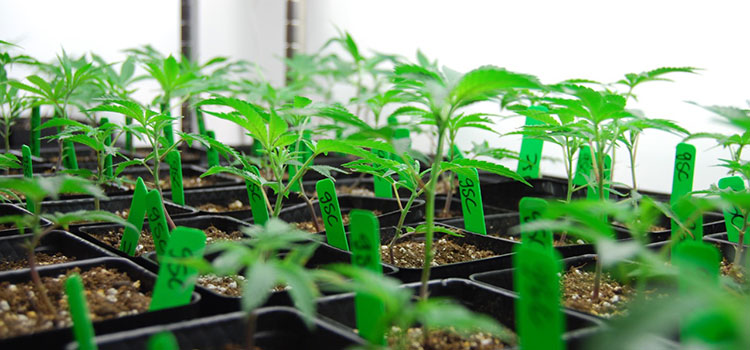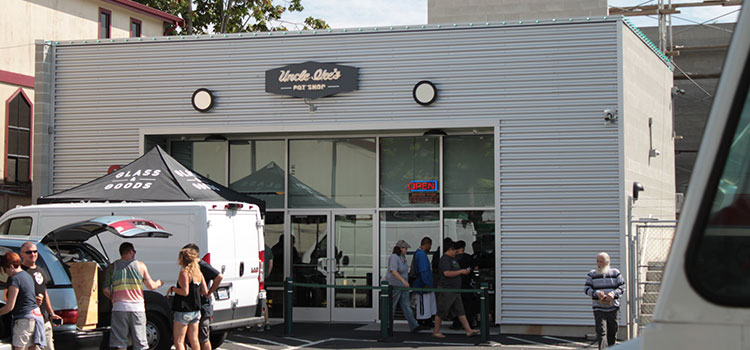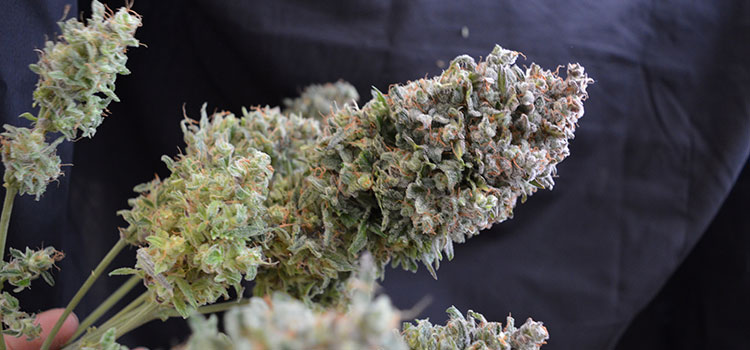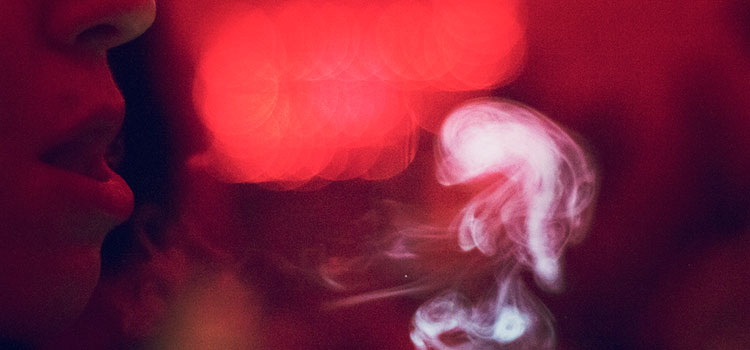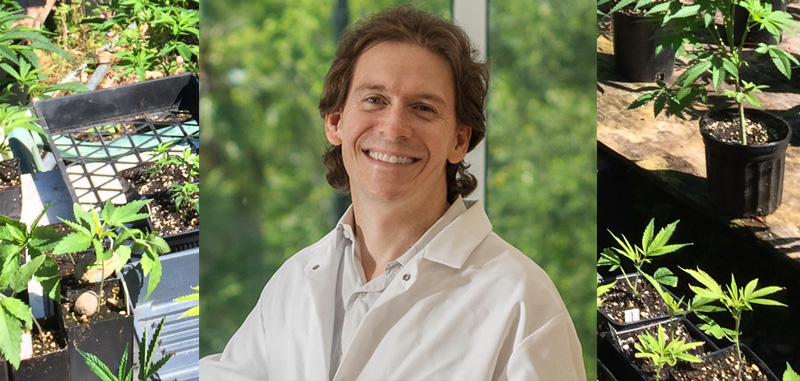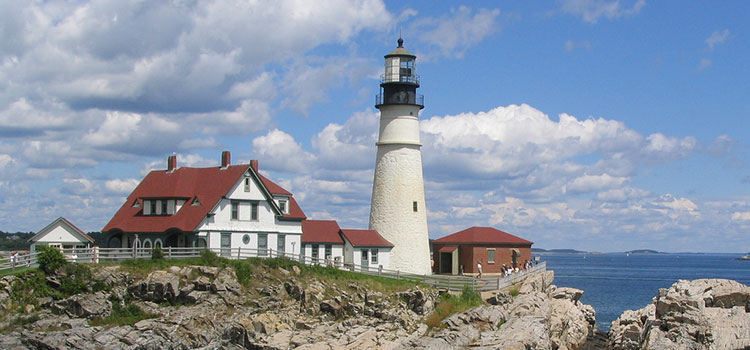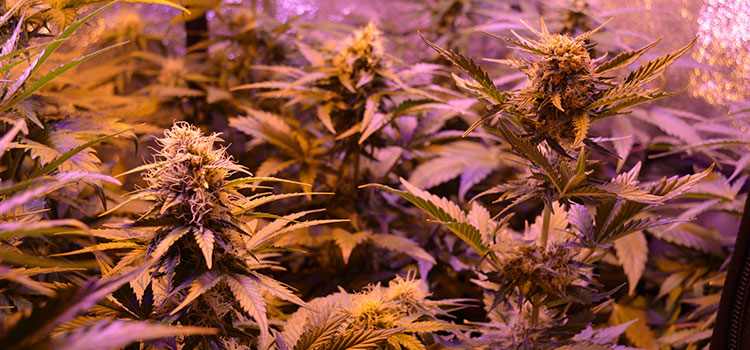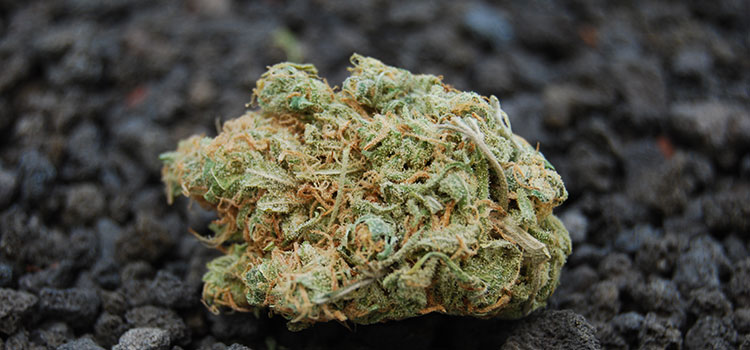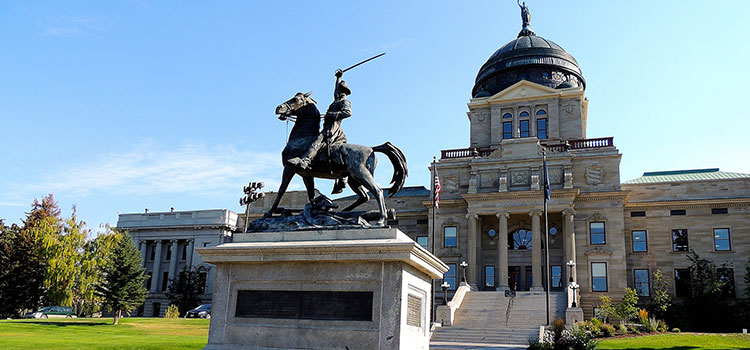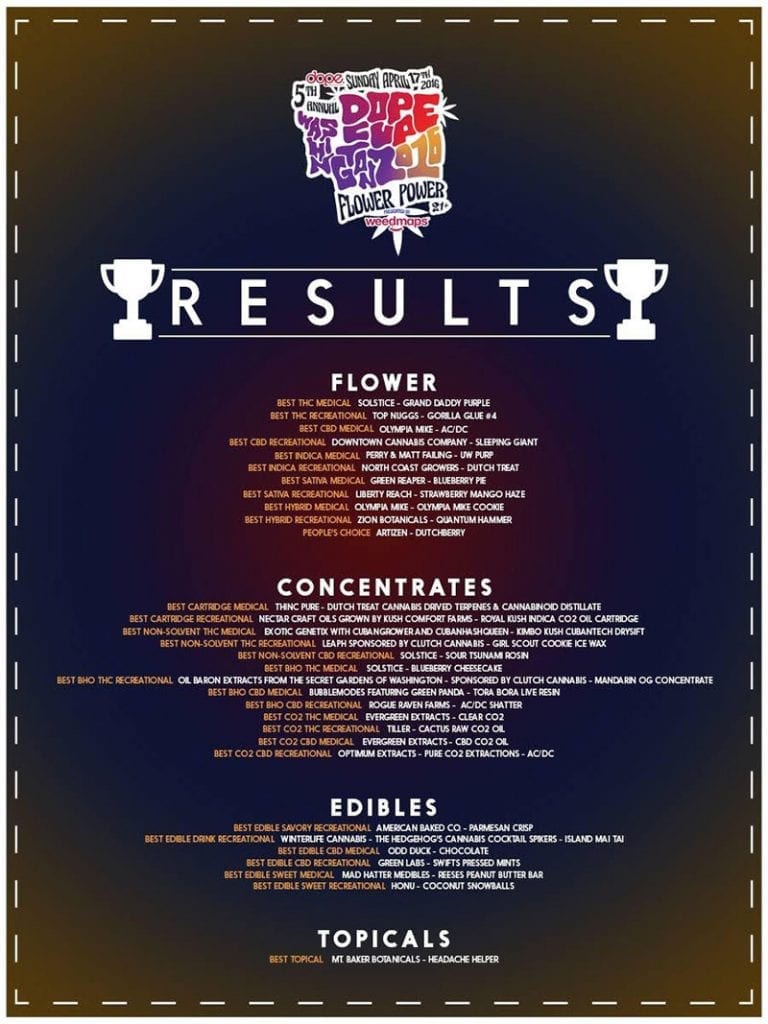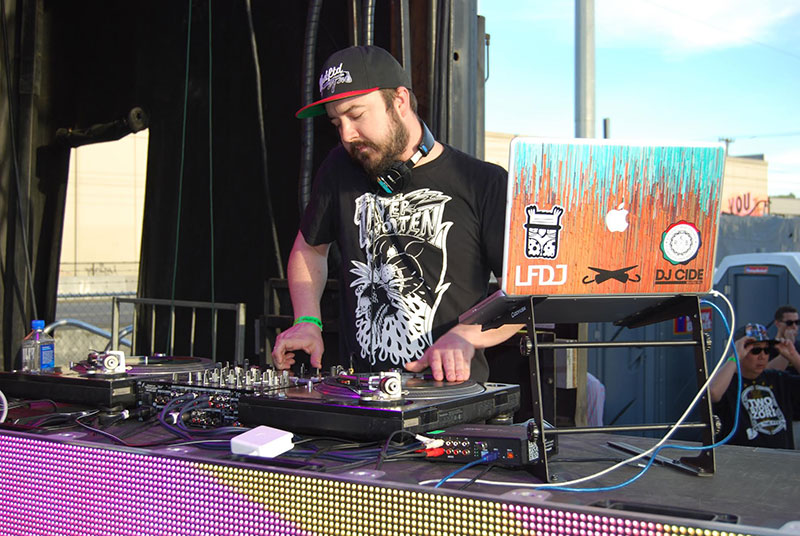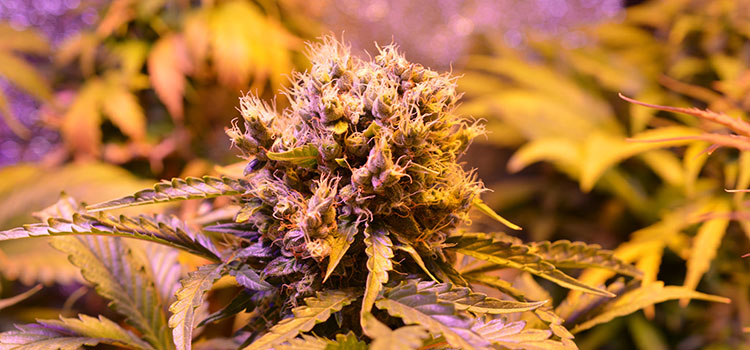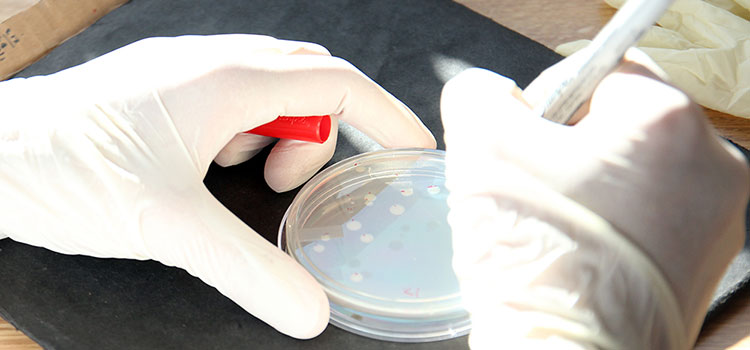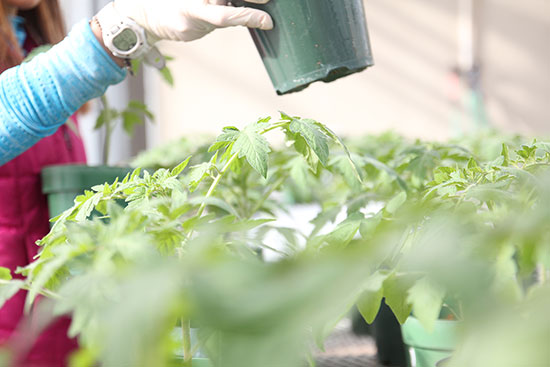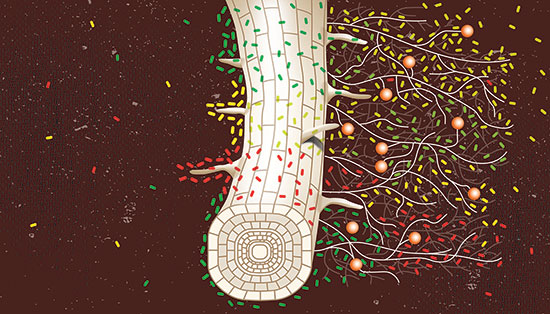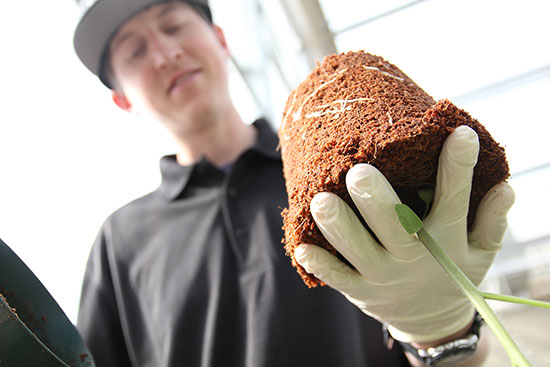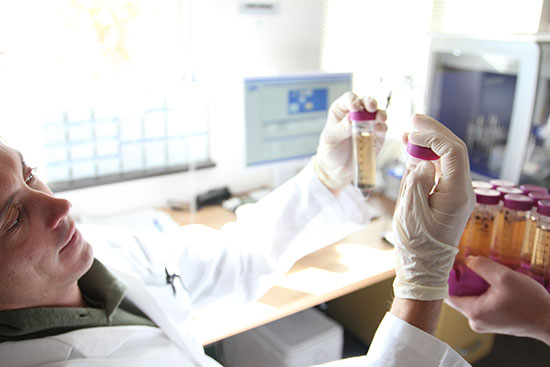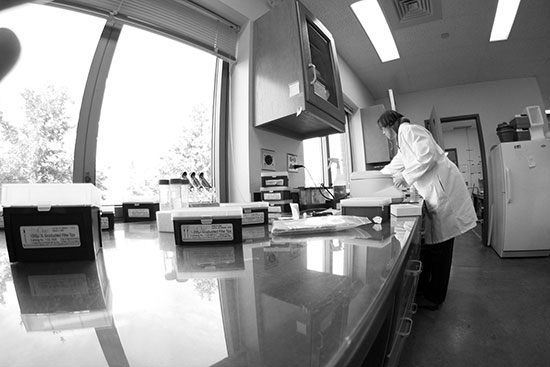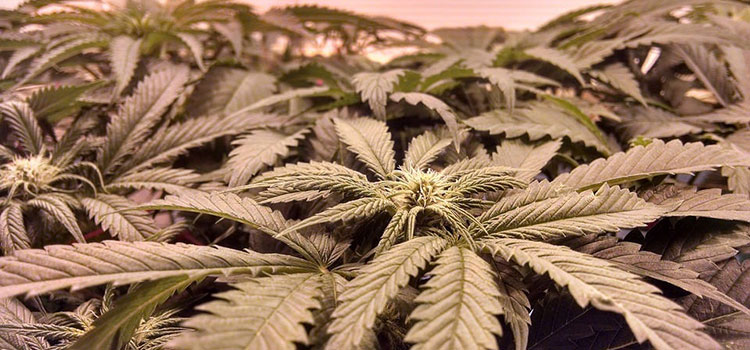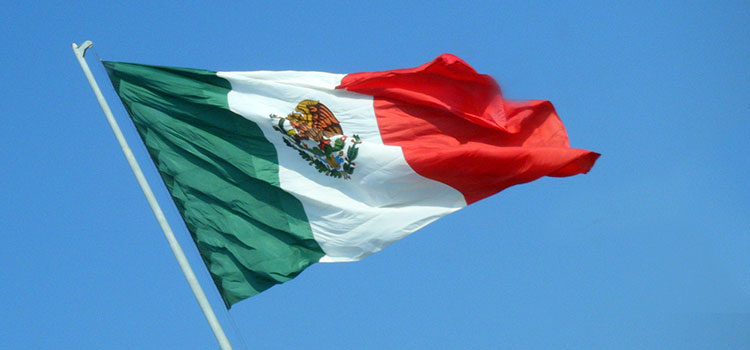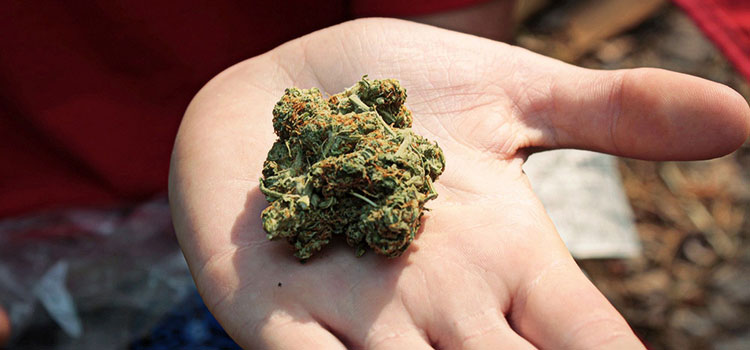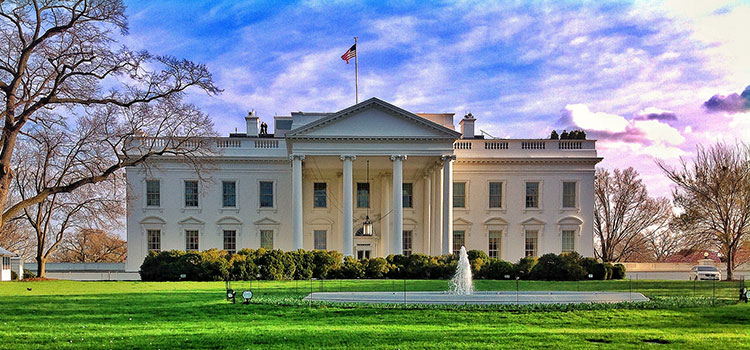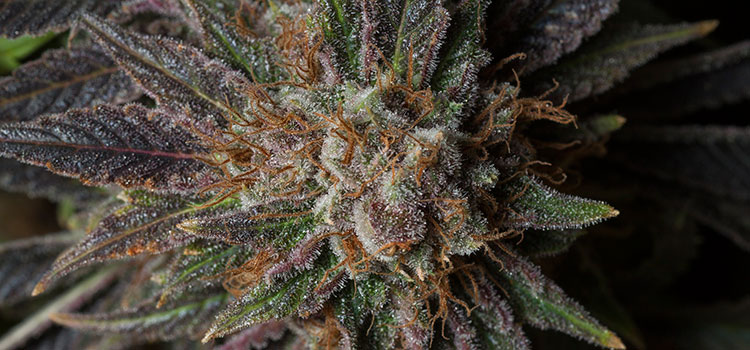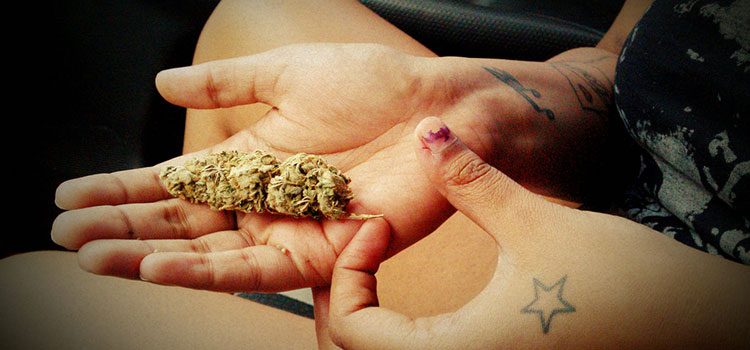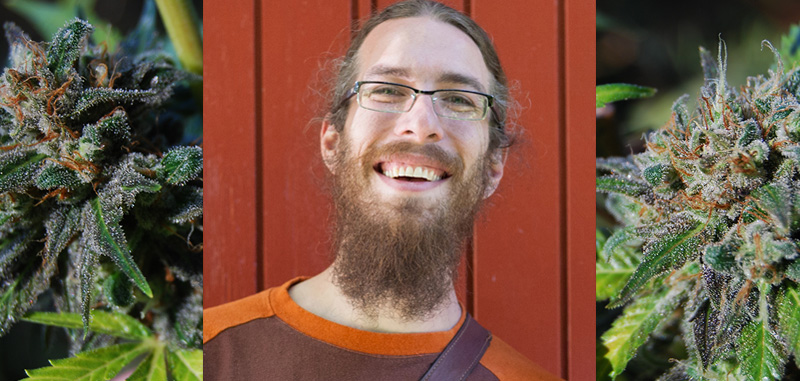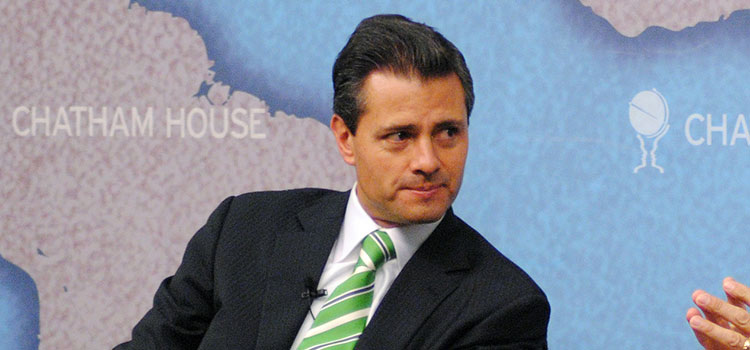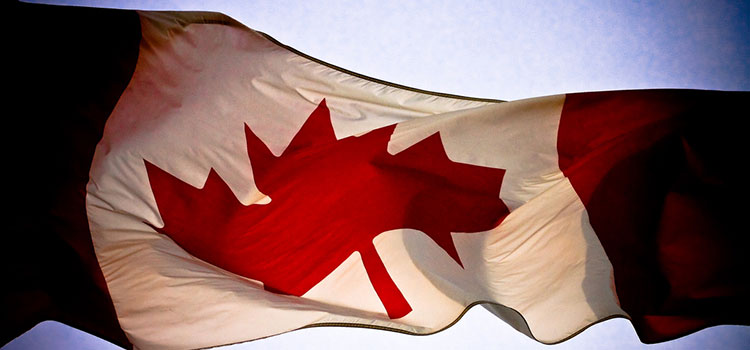Dr. Greg Gerdeman is an assistant professor of biology at Eckerd College in St. Petersburg, Florida, whose research has focused on neurobiology and the human endocannabinoid system. He recently joined our podcast host Shango Los for a conversation about what the human endocannabinoid system is, why current medical students are not being taught about it, and how he thinks that medical cannabis may serve as a preventative measure against ailments brought on by endocannabinoid deficiency. Listen to the episode below, or scroll down for the full transcript!
Subscribe to the Ganjapreneur podcast on iTunes, Stitcher, SoundCloud or Google Play.
Listen to the podcast:
Read the transcript:
Shango Los: Hi there and welcome to the Ganjapreneur.com podcast. I am your host, Shango Los. The Ganjapreneur.com podcast gives us an opportunity to speak directly to entrepreneurs, cannabis growers, product developers and cannabis medicine researchers, all focused on making the most of cannabis normalization. As your host, I do my best to bring you original cannabis industry ideas that will ignite your own entrepreneurial spark and give you actionable information to improve your business strategy and improve your health and the health of cannabis patients everywhere.
Today, our guest is Dr. Greg Gerdeman. Dr. Greg Gerdeman is an assistant professor of biology at Eckerd College in St. Petersburg, Florida. He has actively researched the neurobiological targets of cannabis since entering graduate school at Vanderbilt University in 1995. There, his doctoral dissertation in pharmacology included seminal discoveries about the functioning of endocannabinoids in the brain, especially within neural circuits involved in motor control and pathologies of movement and compulsive disorders. His work at Vanderbilt and subsequently the University of Arizona was funded by the National Institute on Drug Abuse and earned multiple awards for excellence from the International Cannabinoid Research Society.
More recently, Dr. Gerdeman co-directed a study supported by the National Science Foundation investing the release of natural endocannabinoids during endurance exercise. His papers have appeared in top-tier scientific journals including, “Nature and Neuroscience,” and, “Trends in Neuroscience,” and have been cited over 1,500 times in the scientific literature. His research has been highlighted in press pieces ranging from Science to National Geographic to Men’s Health. He coauthored a chapter in, “The Pot Book: A Complete Guide to Cannabis,” and has written as a guest commentator on medical marijuana for the Tampa Bay Times. At Eckerd College, he teaches courses in physiology, neuroscience, and pharmacology. Presently, Greg is Chief Science Officer at 3 Boys Farm in Ruskin, Florida.
Welcome to the show, Greg.
Greg Gerdeman: Thank you. Thank you for having me very much.
Shango Los: One of the reasons I was so interested in having you on this show is because not only do you have a deep understanding of the endocannabinoid system but also you are interested in the cultural aspects of humans coming to realize that we even have an endocannabinoid system and how that is changing culture itself.
The first half of the show, we are going to talk about the endocannabinoids science behind it. Then, the second half, we are going to talk about humans waking up to this realization.
Let’s get people started with an explanation of what the endocannabinoid system is and what role does it play in our bodies.
Greg Gerdeman: That sounds great. I am happy to do that. What are the endocannabinoids? Here, here I go into the narrative of discovery already. They come about because science, ever since the discovery of the plant cannabinoids, THC and cannabidiol (CBD), there was a big scientific endeavor to figure out what they’re doing in the brain. Admittedly, there was great institutional negative bias about it. The research was directed to figure out how things go wrong, whether we get addicted or go mad with cannabis.
What we came to discover out of that research climate, that funding context, is that the body contains intrinsic molecules, signaling molecules that act much like THC and likely other cannabinoids do.
One way to look at that when I talk to people is to say, “What is the signaling molecule?” All cells in the body communicate by releasing various kinds of signaling molecules, like a hormone is a signaling molecule that travels through the blood and the pancreas can communicate with cells in the body by releasing insulin and telling them to get ready for the cells to be ready for sugar.
We came to find in the ’90s that nearly every brain cell, the neurons of the brain release these molecules that we call endocannabinoids that act in many ways like THC does to turn down excitability, excessive activity that can be toxic in the brain, and to mediate processes like perception and learning and memory. They’re kind of like the body’s own cannabis molecules in a sense. They’ve been called the body’s internal marijuana. There’s a good reason to say it that way.
Shango Los: If I am following you correctly, the cannabinoid receptors are receiving the signals from our own endocannabinoids that are made within our body and those signals tell the endocannabinoid system how to modulate any one of these systems. Am I following you?
Greg Gerdeman: Yeah, I think so. It is how cells communicate with one another. The cannabinoid receptors on nerve cells, immune cells, and a whole variety of other cells, the cannabinoid receptors are there to receive the signal but so many different tissues and cell types release these endocannabinoids in order to tell their neighbors what is going on and especially to calm down in excited states, like with seizure activity, excessive activity in neural cells, or with immune cells when they’re getting super inflamed and active. Endocannabinoids get released and cells communicate with their neighborhood by releasing these endocannabinoids and dampening down in general the activity.
Shango Los: All right. That makes sense. If we produce endocannabinoids in our system, what is the benefit for us in adding more cannabinoids to our system by ingesting the cannabis plant?
Greg Gerdeman: There’s lots of way to approach that. One of the direct ways is we more and more and more believe that in certain cases of pathology, there is a deficit, a physiologically relevant, clinically relevant deficiency in endocannabinoids that may be to blame for the depressed mood or the state of say, seizure activity, or chronic pain. Situations like fibromyalgia and migraine. These are where there is a good solid body of evidence that some people suffering from these pain states have for whatever genetic reasons lower levels of activity in this endocannabinoid system. Treating with plant cannabinoids is quite legitimate to say like supplementing this endocannabinoid system.
There is a huge growing body of research, as mainstream as science research gets, that this endocannabinoid system is an intrinsic mechanism for cellular protection, neural protection. Mainstream science has referred to the endocannabinoid system as the brain’s intrinsic neuro-protective system. It is a system by which we maintain balance, what physiologists call homeostasis. Endocannabinoid signaling is part of keeping that balance set point. It is so complex because it is distributed throughout all of the systems of our body. On a case to case basis, different individuals or different syndromes, you may be needing to boost that endocannabinoid system or it may be therapeutic to do so.
Shango Los: Right on. This next question is based entirely on rumor. I do understand the science from having Dr. Ethan Russo on this show that when we fall into endocannabinoid deficiency that it can lead to all sorts of our systems becoming out of whack and can lead to fibromyalgia or worsening of PTSD, irritable bowel syndrome, all sorts of stuff. The rumor part of it is that just in friendly conversation at cannabis conventions, some folks will suggest that the reason that we are seeing an increasing in these disease nowadays is because historically the human had access to cannabis because we continually grew it as we evolved.
However, in the last 70 years, cannabis has been out of the hands of Americans and so because of that, our body, which was used to including cannabinoids, suddenly that supplementation is gone and so we are only left with our endocannabinoids, leading to an increase in these related diseases. Is there any scientific basis for that or is that just people talking around the water cooler?
Greg Gerdeman: It seems pretty speculative. I like the thinking but certainly there is a lot of great modern scholarship about how the cannabis plant has spread across the world. In my roles, when I am talking, for example, debating people around public policy and whether cannabis should be used as medicine in the very close-minded place of the Southeast, I run into doctors who say, “It has been used a long time but so what? So was Strychnine.”
Cannabis has been used for such a long time but it is not just that it is an old medicine that makes it good. It is a medicine that has been used since before recorded history. Our earliest medical documents show that it is there and it has been preserved for thousands of years and across dozens of migrations and cultural transitions, grown, cultivated, selected for traits. We, as humans, have certainly shaped the evolution of cannabis.
The flip side of that question where I read what you are talking about is whether our cultivation of cannabis has helped to shift and shape our evolution as human beings. That would be a theory of co-evolution, which is certainly a scholarly thing to speculate.
As a biologist, I am much more comfortable saying that we have a mutualistic relationship. Cannabis helps human health and we have cultivated cannabis and advanced it for that reason.
When it comes to things like fibromyalgia and chronic pain states being exacerbated, I am more comfortable saying that is because of the chronic stresses that we have in our life that are characteristic of industrialized, 9 to 5, traffic jam reality. We know from really good scientific research that the endocannabinoid system gets assaulted by chronic stress. The endocannabinoid system is part of the body’s stress buffering system. No doubt about it. I could talk about that in very fine detail that might make your listeners kind of glaze over because we know brain networks and molecules and animal situations where that happens. Your system of endocannabinoids in your brain, your endocrine system is part of your body’s stress buffering system and chronic stress wears it out.
Supplementing with plant-based cannabinoid medicines may just have been there all along, granted we have been in this overlong experiment of suppressing it. It has kind of been there almost like an old friend coming to the rescue kind of thing.
Shango Los: If our stressful lives are calling for us to supplement our endocannabinoid system with cannabinoids that we have grown in the cannabis plant, does it matter in what way we ingest those cannabinoids? Whether it is combustion through smoking a joint or a tincture, eating something edible. Does the form that the plant takes when we put it into our body play a role in the quality of those cannabinoids?
Greg Gerdeman: My take from what people are doing and the experience of my more clinical colleagues is really that it depends a lot on what condition you are talking about. We have come to find out that cannabis can be therapeutically helpful in so many ways, not just stress. Many ways that were not anticipated, even 10 years ago.
Going with the flow I was on, let me say that I am a big believer that for your primary care and taking care of yourself, the first step should not be getting the right balance of cannabis cannabinoids, it should be de-stressing and focusing on what makes your life better. Getting to the root of the problem and where you are out of homeostatic balance in your life. I will leave it at that very broad brushstroke there.
If someone has chronic, some sort of anxiety condition that gets triggered, for example PTSD, for certain symptom control, inhalation, like vaporizing or smoking is unsurpassed because you can administer a low dose and achieve an effect, even a sub-psychoactive effect, and sort of what we call titrate to dose very quickly. Take a puff. Get what you need and go about your day.
Then, other symptoms, since I started with PTSD, I will continue there, a major problem is sleep and being scared of sleep, being woken up with nightmares and there, some sort of edible product, a little pill, a little gummy, what have you, a little oil at night, as I understand from patient report and what is largely hearsay for me because I don’t work with patients is that that kind of thing is very helpful for a significant number of patients. They may have different modalities. That is where having an integrative cannabinoid medicine approach that takes what the person is dealing with, combined with a respectable understanding of the cannabis medicine and the different products, it just becomes part of a health program. That is really what is so lacking in medicine today is having a program about your health as opposed to just getting a script and popping pills.
Shango Los: Yeah. The big difference between preventative medicine versus acute care.
Greg Gerdeman: Exactly.
Shango Los: Greg, we need to take a short break. We will be right back. You are listening to the Ganjapreneur.com podcast.
The Ganjapreneur.com podcast is going to sound a bit different going forward. We are now producing our podcasts in house and so we can have more control over how they sound. We want to make them an even better listening experience for you. That means the show is going to sound a little bit less produced and whiz-bang and a bit more down-to-earth and pleasant on the ears.
We didn’t use to control the commercial content and we and many of you thought it sounded out of sync with the rest of the vibe of the show. Going forward, during the commercial breaks, we are going to bring you companies that we believe in. We are going to tell you about them. We are going to tell you how to get in contact with them and then we will get right back to the show. Pretty simple really.
This change also means we are booking our own commercials now. If you want to reach out and connect with our audience in the most personal way we can offer, drop us an email at grow@ganjapreneur.com and we can talk about you becoming a commercial sponsor of the podcast.
It is our hope and intention that these changes will make the podcast and even more pleasant listening experience. Thanks for listening and being part of the Ganjapreneur family. Now, back to the show.
Welcome back. You are listening to the Ganjapreneur.com podcast. I am your host, Shango Los. Our guest this week is endocannabinoid researcher and author, Dr. Greg Gerdeman.
Before the break, Greg, we were talking about the endocannabinoid system and kind of giving people a superficial understanding of what their endocannabinoid system is and the proper care and feeding of it. One of the things that I am interested in how your papers come across is that you like to also talk about the idea of humans realizing that we even have an endocannabinoid system and how it is starting to shape and shift care.
How much has the knowledge of endocannabinoid deficiency and the existence of the system grown in the last 10 years? It seems new.
Greg Gerdeman: It is new. It is not as new as it seems sometimes but it is new, really. It is really new since the early ’90s. It has been growing by leaps and bounds. It is like a floodgate, really.
When I think back, when I started getting into this, just to ask a room what cannabis is, that wasn’t much in the vernacular, at least in Tennessee, where I was at. Endocannabinoids, nobody knew anything about. I sometimes get spoiled or fooled into thinking more people know about it than they do. Maybe because I look at my Facebook feed and it is just all about it.
Shango Los: Yeah, we live in a bubble, Greg.
Greg Gerdeman: It’s true. People are learning more and more about it. It is only going to continue because in my view, it is one of the epic scientific discoveries of the second half of the 20th Century, maybe the whole 20th Century. It is a gigantic paradigm-shifting discovery about cellular communication.
Shango Los: At a systemic and doctor-patient relationship level, how is the discovery and I guess more popularization of the endocannabinoid system changing the way that we look at our body’s systems and healing and preventative care?
Greg Gerdeman: I think at the basic science level, and this is largely researchers that are in labs, it is really changing models of how health and disease work in a lot of systems. Even various cancers, a cannabinoid sort of system problem may be part of the ideology of the tumor disease growing. It is more at the level of the basic research though.
By and large, outside the pockets of cannabis normalization, as you talk about, which I love that term, outside of those pockets, there’s tremendous naivete about what it is. I was meeting doctors at a conference just this past weekend who knew nothing about the endocannabinoid system and their eyes are looking like mine did when I was a 20-year-old graduate student. There’s much to learn about it.
Shango Los: Sometimes I will engage with Western doctors who do not have the cannabis knowledge but they’ll come to me to talk to about some aspect of patient care because since I am in the industry, I sometimes know more than the doctors do. They ask me about it and then I mention the endocannabinoid system and so often, I get this kind of blank look on their face that they actually don’t even know that we’ve got one.
People joke that they don’t teach the endocannabinoid system in med schools and that they have only just recently started teaching it. Is there any truth to that? Do they teach it in med school?
Greg Gerdeman: The thing is largely no, but more and more. I have talked about it all along for a long time. It is also sometimes said within the cannabis culture, we learn about the skeletal muscular system and the cardiovascular system, why not the endocannabinoid system? They’re not quite the same. It is not a perfectly fair comparison because the endocannabinoids are molecules. You don’t see those with your naked eye. It is not an anatomically distinct system, anatomical system per se.
The endocannabinoid system is mechanism that is shared throughout the tissues in the body. It is a key mechanism by which I daresay every tissue system in the body regulates itself. It has been most pronounced in our understanding of the brain and the immune system. Then, I think that is where the greatest action is, so-to-speak.
Awareness is growing. What can I say? The neuroscience textbook that I teach my undergraduate neuroscience course with and is the most popular undergraduate neuroscience textbook by Mark Bear and colleagues, it has three pages on endocannabinoids. It cites my work and others and it calls it, “The most exciting discovery in cell signaling in the past several years.” My undergraduates are learning about it.
Whether physicians are going to have entire courses in medical school or not, it certainly needs to be integrated into much of their curriculum and experience beyond just the little module they have about why drugs make you high and addicted, which is sort of traditionally where it gets pigeonholed.
Shango Los: Right on. Right on. That makes sense. On a practical level, is it true that always adding more cannabinoids is good or can the endocannabinoid system become overwhelmed because I am over-supplementing with cannabinoids?
Greg Gerdeman: I would lean towards the latter. I am definitely not going to say it is always going to be better. I think I have learned a lot from some of my colleagues, like Dustin Sulak and Bonnie Goldstein and doctors that really work with this that sometimes going too much and developing tolerance to the cannabis, it puts patients back into a negative experience. What they need for therapeutic dosing is really low. Regular micro dosing of cannabis.
I am very interesting in the preventative health mindset of low, frequent, or relatively often dosing with cannabis or sort of the acid raw cannabinoids that aren’t psychoactive possibly being a healthy approach to staving off neurodegenerative disease, like Alzheimer’s and Parkinson’s that we know are related to chronic inflammation.
On the other side and this also is buried in the more rigorous science, there are conditions that may be exacerbated by CB1 activation. There is concern that activation of CB1 receptors in the vasculature of the blood vessels may help to promote atherosclerosis or consequent increased stroke risk, for example. I think there should be more research into that. There certainly may be cases and sort of particular individuals or genetic predispositions, where it is not a good idea at all to engage in cannabis as medicine.
Shango Los: Wow. I have never heard that before. That is brand new information for me. Now, this begs this question and I am going to ask you for a number. I know that I am asking you to do something that is challenging. I want you to rise to the occasion.
Let’s say that someone, like me, who doesn’t necessarily have one of the typical health issues that CBD is recommended for. However, I appreciate the neurogenesis and neuro-protectant qualities of cannabinoids. I just want to take a supplement daily that will help me not have Alzheimer’s, not develop into Parkinson’s. Just something to help me as I get older. I actually do that. I have grown my own ACDC at 20 to 1 and made my own tincture and had it lab-tested. Every day, I have a squirt of it and it is 5 milligrams of organic CBD and a little bit of water and boom. I don’t know that 5 milligrams is the right amount to actually help me long term.
Based on your research, can you just give us ballpark figure of what somebody who is wanting to stay healthy but not necessarily targeting it for a particular issue that they are trying to fix, how many milligrams of cannabinoids should we be trying to put into our bodies a day just as a simple supplement? Micro dosing, that doesn’t tell me much numerically and I would really love to have that number.
Greg Gerdeman: Right. When you are talking about CBD, it is a shot in the dark. Sure, 5 milligrams, 10 milligrams, that makes sense to me. That makes sense to me and I totally resonate with what you are saying about why not try that? With the group I am working with in Florida, 3 Boys Farm, who wants to get into growing, that is the kind of product that we think would be very good for health, wellness, and prevention.
The thing is there is so much of a skilled research structure, research and institutionalized environment in the U.S. that has been shackled to study this stuff. I think that people should get together in groups, whether its crowdsourcing or through medical center initiatives or something. It would just be great for all of us to accumulate that data and track it. People are doing it anyway, and why shouldn’t they? It is just absurd that it should be prohibited like it is. Utterly absurd and it just seems to me like everybody knows that but I know they don’t. It should be tracked if we really want to be able to get a handle on that dose.
In animal studies and those then can be very hard to extrapolate because mice metabolize things much faster than humans do, for example. That would suggest that low doses. I just mentioned a possible risk factor like atherosclerosis, hardening of the arteries but in a highly published prestigious published mouse paper, super low doses of THC, like microgram doses in mice, which metabolize it better than we do, had lower incidence of atherosclerosis, hardened arteries, which is a risk factor for all kinds of cardiovascular disease and number one killer in the U.S.
Work by people like Gary Wenk and others at Ohio State looking at Alzheimer’s disease models in mice show really low doses, regular frequent doses. He started calling it his “Puff-a-day” model, like taking a puff a day of cannabis could stave off these chronic neurodegenerative diseases. Oftentimes, we know if it runs in our family or we have a good sense of it, why not? There is no good reason to think that we shouldn’t let people self-experiment with that and have the liberty to do it. Let’s unshackle the research engine to follow that and make our future generations all the more informed about it.
Shango Los: That’s great. That tells me both that my 5 to 10 milligrams a day is a good place for me to go and all of our support for continued research is a good call.
Greg Gerdeman: I think so.
Shango Los: With that we are going to take another short break and be right back. You are listening to the Ganjapreneur.com podcast.
Entrepreneurs across the country are establishing businesses in response to cannabis normalization. Once a state becomes legal for cannabis, they all go through similar growing pains. New business owners must develop a business plan, a brand, learn growing and processing techniques, and develop products from those new skills and get them to market. Most challenging, they must learn how to work creatively within the narrow bands of legality set by the state regulators. Each step in this process is filled with hidden delays and burn resources.
The most common challenging belief I have seen from my own clients and other players in Washington, Colorado and Oregon is that they think they can do it all themselves or worse, that they have to do it all by themselves. This is simply untrue. In most cases, it will cost you a great deal of time, money, and frustration. We have reached the point now that there are exceptionally good cannabis consultants who have learned from their mistakes, risen to the top of their own markets, and now offer this advice to new cannabis entrepreneurs in states that are just moving into production now. One of these is Green Lion.
Green Lion was an early player in the Washington medical market. They grew up during times of confusing gray market regulations, balancing between honoring the Cole 2 memo in state cannabis laws, while continually striving to push the market forward with ground-breaking growing, processing, and products. Green Lion was in the first round of licenses awarded by Washington State and they began the difficult challenge of running tandem medical and state licensed recreational operations while being a shining example of creating revenue and staying within the fine details of state law. Their extraction lab uses a variety of methods and has a reputation for producing exceptional oils and an employee training program taught by folks who are now industry leaders.
Green Lion can help you attain your own cannabis sales goals. Their multifaceted team has the expertise you need, whether it be growing, extraction, product development, branding, or support working through your state’s licensing process. Green Lion is also now acquiring established medical and recreational marijuana product lines to bring into the Green Lion family. If you have an established product and want to participate in the licensed cannabis market, Green Lion could be the place for you. They will fold your manufacturing team into their production and get your proven products into the hands of cannabis enthusiasts everywhere.
Finally, do you enjoy fine cannabis oil? Green Lion presently provides recreational and medical products made with their premium oils throughout Washington State. Ask for Green Lion dab oil, CO2 oil and Keef-infused pre-rolls, vape cartridges, and full plant extract topicals at your favorite retail location. Get your pen ready because here comes the contact information.
If you want to achieve a positive cash flow in a shorter time, reach out to Green Lion. If you have a marijuana business that needs to find a licensed home manufacturer, reach out tO Green Lion. Drop a line to contact@greenlionindustries.com, and let them know how you want to work together. Tell them Ganjapreneur sent you too. That email address is contact@greenlionindustries.com.
Now, back to the Ganjapreneur.com podcast.
Welcome back. You are listening to the Ganjapreneur.com podcast. I am your host, Shango Los. Our guest this week is endocannabinoid researcher and author, Dr. Greg Gerdeman.
In the first segment, we talked about the nature of the endocannabinoid system and what it is and how to feed and water it. Then, in the second part, we talked about the importance of endocannabinoid research and how it is coming into the public consciousness. A great deal of the people who are listening to this show are entrepreneurs who want to make the most of cannabis normalization by both bringing a good product to market that also helps patients.
Greg, can you give us an of how best entrepreneurs, who want to be able to deliver a product that is rich with CBD to help feed the endocannabinoid system, can do that?
Greg Gerdeman: Yeah. Thanks. I think that is a great question. Personally, I am excited to see how much companies and entrepreneurs are taking to trying to educate patients and the public. I see so much talk about the endocannabinoid system within the context of cannabis businesses that as an educator, I am excited about it. They’re talking science. That needs to keep up. Building inroads to help educate physicians about that and normalize their concepts of CBD and endocannabinoid-based medicines is key.
Speaking of products, one of the things I am really excited about is the progress moving forward with non-psychoactive topicals, whether it is CBD or the acids like THCA, CBDA. There is so much potential there. As a great personal case in point, I have been invited to give a keynote continuing medical education accredited lecture at a Congress of Clinical Rheumatology at a conference in Destin, Florida next month. It is one of the largest conferences of clinical rheumatologists, mainstream docs that don’t study cannabis and I am giving a talk on cannabis and cannabinoid biology. I am thrilled to be asked. The point is these are doctors who I am going to try to focus on immune system modulating effects, the notion of topicals that are not psychoactive at all, and it does help to break down these barriers to understanding the cannabinoid system as a therapeutic system. Personally, I think as that sort of health care normalization goes on, more physicians will understand that we really know a lot about its effects in the brain and its psychoactivity as well and it will be less scary.
Shango Los: Putting myself in the shoes of a product developer, I would think that I would be excited about pretty much taking any edible product I am making, whether it be a tincture or a capsule or an actual tasty snack edible, and just put 5 to 10 milligrams per serving, just add it to it as a supplement and that way, whether it is a patient and they need the CBD or if they are a recreational user and are using cannabis for its stress-relief and life quality enhancements, either one is going to be benefiting from having 5 milligrams of cannabinoids added to whatever they are ingesting. Would you agree with that?
Greg Gerdeman: Yeah, I think so. Of course, if you are talking about THC proper, 5 milligrams can be high for people. That is not really what you are talking about.
Shango Los: No. No. No. I am talking about the non-psychoactive family.
Greg Gerdeman: Right.
Shango Los: Like cannabidiol.
Greg Gerdeman: It makes sense. I am not going to be an expert to talk about the balancing act that has to be worked with the FDA vis-a-vis dietary supplements or treating some sort of condition but speaking commonsensically, absolutely. I agree with you 100%.
Shango Los: Right on. Right on. The last question before we wrap up here is as a product developer and let’s say that I am growing a high CBD strain, for example ACDC or Remedy, and so I am not growing it for its THC content. I am growing it for its cannabidiol and other cannabinoids. Are there certain processes of extraction that degrade the cannabinoids that they are trying to deliver to their customers? Are there specific extraction methods that just walk all over cannabinoids that we would want to avoid?
Greg Gerdeman: Gosh. I am learning more and more about the actual hands on extraction methods. I think mostly it is avoiding heat and that those methods that will start to generate high heat certainly will enhance the rate of oxidizing and breaking down the cannabinoids into something that you may not want and not hitting your desired target because I think it is certainly important to know what is in there, at least from a medical perspective and if we want to track of time, like I said, research what works and what doesn’t. It is really important to know what’s in there.
Extraction methods, there are lots of really great experiments going on with extraction methods. Certainly, myself intuitively am opposed to the butane and other hydrocarbons as extraction methods. That doesn’t make sense to me as a health-promoting thing. Otherwise, there are lots of different things that can be done with cold alcohols and super critical fluid extraction and just sort of slow-pressing it into oils of choice or the solventless sort of hash methods. I think that is why these vertically integrated systems, although we hope to get into that in Florida, it is not really what Florida should do. There should be a rich entrepreneurial market to try these different artisanal sort of products and let the entrepreneurs help figure all of that out by open dialogue.
Shango Los: It also sounds like almost a commercial for Rosin Tech and just trying to squish flowers into oils since it’s mostly friction and weight and very little heat at all.
Greg Gerdeman: Yeah. They’ve got an angle. Sure.
Shango Los: That’s all the time we have for today, unfortunately. I have really enjoyed having you on the show there, Dr. Greg Gerdeman. You have such an elegant way of explaining the endocannabinoid system. I think it makes it really accessible. Thank you so much for being on the show.
Greg Gerdeman: It is my pleasure. Thank you. I hope to be speaking more. I am working on a book. I hope to be out there more and more. I really appreciate being on this show.
Shango Los: To find out more about Dr. Greg Gerdeman, you can simply do a Google search, which will bring you several articles, interviews, and a few videos. You can also connect with him directly via email if you want at glgerdeman@gmail.com. You can find out more about his work with 3 Boys Farm at their website, 3boysfarm.com. That is with the number 3. If you want to learn more about the endocannabinoid system, you can go all the way back to episode number three of the Ganjapreneur podcast with Dr. Ethan Russo, where we discussed the science behind endocannabinoid deficiency and its impacts on health.
You can find more episodes of the Ganjapreneur podcast in the podcast section at Ganjapreneur.com and in the Apple iTunes Store. On the Ganjapreneur.com website, you will find the latest cannabis news, product reviews, and cannabis jobs, updated daily, along with transcriptions of this podcast. You can also download the Ganjapreneur.com app in iTunes and Google Play. Do you have a company that wants to reach our national audience of cannabis enthusiasts? Email grow@ganjapreneur.com to find our how. Today’s show was produced by Pat Packett. I am your host, Shango Los.
